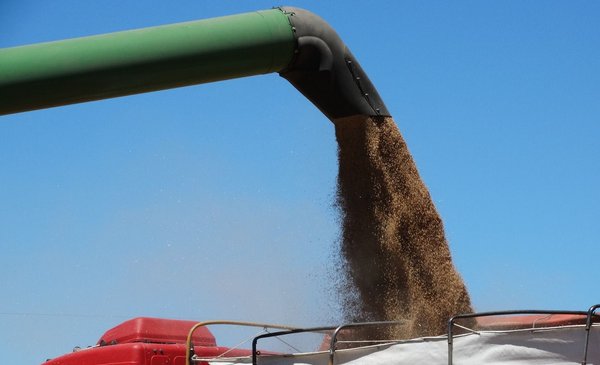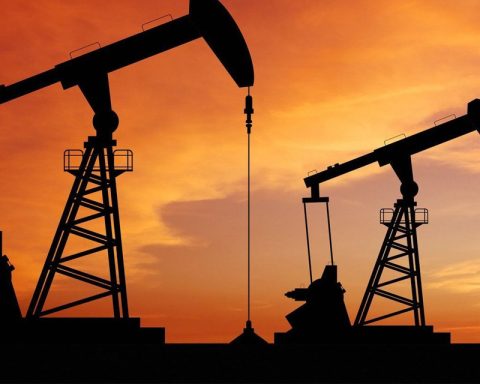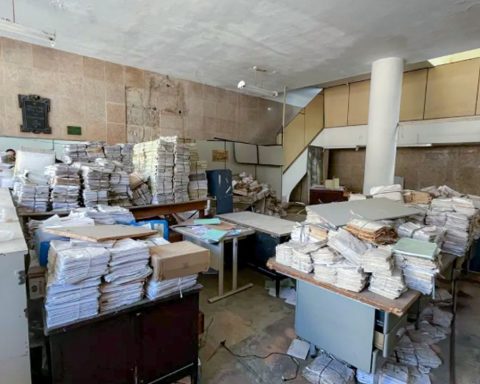The start of war between Russia and Ukraine provoked a sharp drop in stocks and a spike in raw materials. While strong increases are seen in gold and oil, soybeans, wheat and corn show strong advances in the market and their prices jump to the zone of historical maximums.
The price of soybeans increased 3% this Thursday and is located at historical maximums, with a rise from US$ 16.90 per ton, stood at US$ 632.36 per tonand even went as high as $645.
For its part, wheat had a rise of US$ 18.37 (+5.8%) and was located at US$ 340.25 a ton on the Chicago Stock Exchange.
The corn also had a valuation and, with an increase of US$ 13.78, it stood at US$ 282.26 per ton.
How does it hit Uruguay?
This price rise occurs while Uruguay is in full summer harvest. There are still a few weeks to go before the harvests begin, but the increase in values adds to the good news of the recharge of water that the crops had in recent days. Soybean, for example, is the most widespread crop in the national agricultural area and this year it is close to 1 million hectares (ha) of sowing, according to official data. For his part, the corn area of this agricultural campaign 2021/22 is about 145 thousand ha, a very similar area to the previous year.
In the case of wheatthe planting of this winter crop only begins between the months of June and July in Uruguay.
According to El Cronista, given the confirmation of the European invasion, global markets are falling 2% on average, added to the fact that the main commodities are reacting upwards, with oil futures advancing 6.6% and gold a 1.9%.
“The same happens with natural gas (5%) and wheat, thanks to the fact that both Russia and Ukraine are major world producers of these products, so the conflict is expected to generate a greater limitation in their global supply,” they said. Cohen’s analysts.
Wheat prices rise due to Russia is the world’s largest wheat exporter.. his enemy, Ukraine is also a major player in world wheat exports, ranking third. In regards to corn, Ukraine is the fourth largest exporter in the world.
Therefore, the rally responds to the fact that the productions and supplies of these goods may be affected. Faced with a potential lower supply of grains, the market adjusts by price and tends to rise sharply.
The fuels affected
On the other hand, fuel prices have also been affected by the Russian attack. Europe depends on the gas that Russia sends it. From the war and risks of lower supplies, commodities rise and are placed at all-time highs. In response to the outbreak of the war between Russia and Ukraine, oil prices soared and crude hit its highest value in more than eight years.
Russia is one of the biggest exporters of oil and gas, and investors fear the crisis could disrupt energy supplies, which in turn would add to already sizzling global consumer inflation. Russia supplies roughly 40% of the European Union’s natural gas, and any threat to that supply could push regional prices even higher.
“Any disruption to Russian oil and gas deliveries would be virtually impossible to offset, especially for Europe,” Commerzbank strategists said. “Although European gas stocks should last until the end of winter, the necessary replenishment for next winter would hardly be possible,” they added.
“The scale of the disruption and the corresponding difficulty in replacing lost Russian supply means that price sensitivity to Russian oil disruptions is high,” said Vishnu Varathan, head of economics and strategy at Mizuho Bank.
In a note published by the financial portal, Market Insider, Varathan estimated that oil prices could increase by 15% to 30% if 30% to 40% of Russian oil exports are affected.
Varathan also said that it means that oil “at levels of US$115 or US$130 a barrel, they do not look unimaginable amid the heightened stakes of a conflict between Russia and the West.”
The Chronicler-RIPE


















